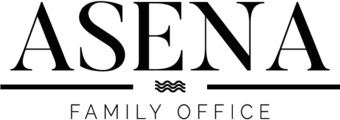** International Communique No. 331 – 29th of March 2022
————————————————————
OVERCOMING ANXIETY
Major equity markets ended in haphazard fashion, with attention focused on the fallout from the war in Ukraine and on central bank manoeuvres. Take the Nikkei index, for example, which bounced back by 4%, and the S&P 500 and Nasdaq, both of which gained almost 2%. European equities are exposed to energy price fluctuations, so their performance was mixed. Some indices ended in positive territory; others negatively, depending on their respective sector breakdowns. The CAC 40 lost the most ground, giving up 1%, followed by the Dax, down 0.8%.
At the sector level, commodity-related stocks led the way, in tandem with soaring Brent oil prices, while the prospect of increased military spending supported the defence industry.
The surge in US yields, following more hawkish rhetoric from Fed members on the subject of future rate hikes, did not prevent a rally in major tech stocks this time round (Apple +7%). Tech widely outperformed cyclicals as investors focused on earnings growth potential, which is expected to remain relatively brisk despite slowing economic growth. As such, in spite of the substantial losses racked up in bond markets in March and the pressure on corporate bonds, equities have finally returned to their pre-war levels.
Fed Chair Powell has no longer stated that inflation is transitory. But despite the sharp correction in bond markets, things are still far from a mood of panic. Fears of stagflation, as seen in the 1970s against the backdrop of oil crises, are spreading in people’s minds. Back then, an inflation rate of 6% propelled the 10-year yield on Treasuries up to 8%. This contrasts with just 2.5% today.
In addition, the yield curve in the US is flattening. The spread between 10-year and 2-year bonds is now just 20 basis points, raising fears of an inversion; and an inversion has preceded every single economic recession since the 1950s by a few months. According to research by the Fed, which certainly does not want to be accused of hamstringing the economy, a more reliable metric would be the 18-month point in the yield curve, which is not inverted at all.
For this year, a mere slowdown in the growth rate seems more likely. Positively, it is accepted that the Covid epidemic – which is no longer at the forefront of investors’ concerns – has become manageable. The shift from pandemic to endemic means that the world is getting back to business as usual, as households dust off their massive savings and start spending again.
If you have any questions please contact the office on (03) 9670 6070.
